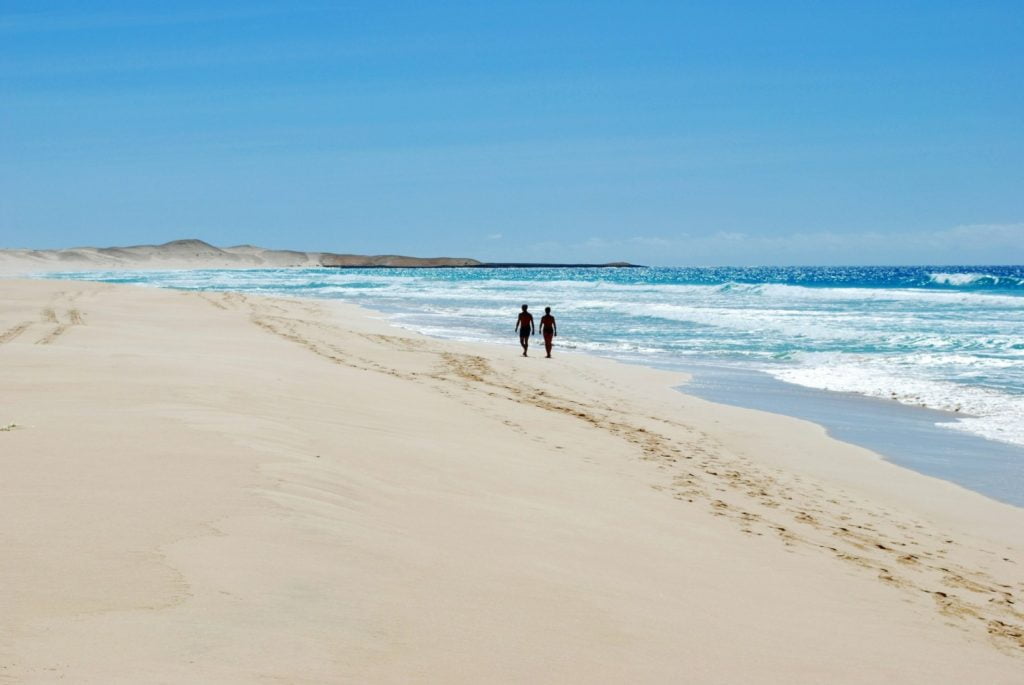Boa Vista
The Dream Beach Island

What to do
- Island Tour
- Diving
- Boat excursion
- Bathing
- Surfing
- Kitesurfing
- Windsurfing
- Snorkeling
- Turtle watching
- Whale watching
- Bird watching
What to see
- Chaves Beach
- Santa Monica beach
- Curralinho
- São Roque’s Church
- João Galego
- Rabil
- Cabeço dos Tarrafes
- Morro Negro’s Lighthouse
Geography
Boa Vista in Portuguese means “good view”. This is the easternmost island of Cape Verde, with a distance of 455 km to the coast of Africa. Located in the Barlavento group of the archipelago, the island is known for marine turtles and traditional music, as well as its ultramarathon and its sand dunes and beaches.
The island constitutes the municipality of Boa Vista, divided in two parishes: Santa Isabel and São João Baptista.
With an area of 620 km², it is the third largest island of the archipelago, after Santo Antão and Santiago. Much of the island is flat. The highest point is Monte Estância, with an elevation of 387 meters. Other mountains include Santo António and Monte Negro. Its main town is Sal Rei. The ferry port and the airport (Rabil Airport) are located on the northwest side of the island.
There are two islets surrounding the island, named Ilhéu de Sal Rei, featuring a lighthouse in the west, and Ilhéu do Baluarte, the easternmost point in Cape Verde.
Boa Vista was twinned with the town of Zocca, Italy, on May 9th 2014.
Boa Vista has a private school, a middle school, high school, churches, beaches, large hotels and a port which underwent expansion in the early to mid 2010s. Other hotels and villas have also popped up in the west and south of the island in recent years.
History
As of the mid-19th century, the population was estimated at 4,000. Boa Vista has the smallest population of all of the inhabited Cape Verde islands and it is the least-dense populated in the archipelago. While most of the population lives in Sal Rei, there are many small settlements which vary from 10 to 100 people.
The population steadily grew up to the 1900s, but drought and famine affected the population and many of the population emigrated in the final decades of Portuguese rule that started from the 1930s. Since then, the population grew around 10% each decade. Emigration dropped the population severely between 1970 and 1980. In 1990 the population started to rise for the first timea and at the end of the 20th century the population was nearly equal to the 19th century population.
Construction of hotels, villas and a stadium made a record breaking growth and reached 8,554 inhabittants in 2010, an addition of over 100%. Nowadays the estimate population has reached over 10,000.
Its economy was originally based on agriculture, but desertification led to salt collection becoming more important. Its main industries today are date farming and tourism, with already several touristic establishments being built in recent times.
Get inspired
”Geography” and “History” source: Boa Vista, Cape Verde. (2017, February 10). In Wikipedia, The Free Encyclopedia. Retrieved 21:28, February 18, 2017, from https://en.wikipedia.org/w/index.php?title=Boa_Vista,_Cape_Verde&oldid=764776570
